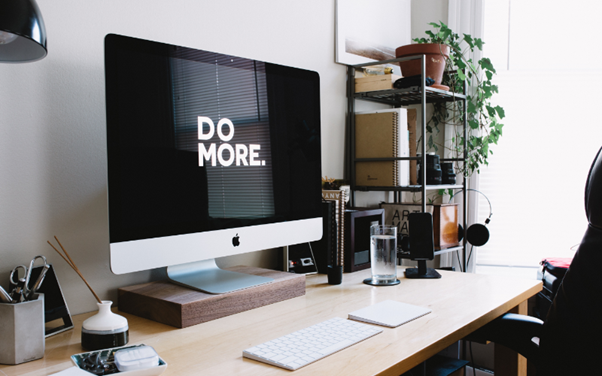The significance of an effectively designed office is critical in the contemporary work landscape characterised by growing concern for employee well-being.
Since employees dedicate considerable time to their workstations, emphasising ergonomics is necessary to boost productivity, promote well-being, and improve overall job satisfaction.
Explore the vital function of ergonomics in interior design for offices, providing insights into how deliberate design decisions can foster a healthier and more productive workplace.
Understanding Ergonomics in Interior Office Design
Ergonomics is the science of designing spaces, products, and systems to fit the people who use them. Office ergonomics involves creating a work environment that supports employees’ physical needs, reducing discomfort, injury, and long-term health risks. An ergonomic office space is one where the furniture, layout, and equipment are tailored to the human body’s natural movements, promoting good posture and minimising strain.
Primary Ergonomic Principles in Office Design
Chair Design and Adjustment
One of the most critical aspects of office interior design is the choice of office chairs. An ergonomic chair should support the spine’s natural curves, with adjustable height, armrests, and lumbar support features. The seat depth should allow the user to sit with their back fully supported by the chair while keeping their feet flat on the floor. A chair that aligns with these principles helps prevent back pain and encourages proper posture, which is essential for long-term health and productivity.
Desk Height and Layout
The desk is another vital component in ergonomic office design. The desk height should allow employees to sit comfortably with their elbows at a 90-degree angle while typing. Additionally, the desk should be spacious enough to accommodate essential items without clutter, ensuring that everything needed is within easy reach to minimise unnecessary movement. Adjustable height or standing desks are increasingly popular as they allow employees to alternate between sitting and standing, reducing the risks associated with prolonged sitting.
Monitor Placement
The placement of computer monitors plays a significant role in reducing eye strain and neck discomfort. Ideally, the monitor should be at eye level, about an arm’s length away from the user. The top of the screen should be at or slightly below eye level to avoid straining the neck. Dual monitors should be placed close together and at the same height to prevent excessive head movement. By following these guidelines, the risk of musculoskeletal disorders is significantly reduced.
Lighting and Glare Control
Proper lighting is essential in any interior office design. Natural light is preferable, as it enhances mood and reduces eye strain. Controlling glare is also necessary, as it can cause discomfort and reduce productivity. Adjustable window shades or blinds can help manage natural light, while task lighting can be used to ensure workspaces are adequately illuminated. The goal is to create a balance that allows for sufficient light without causing glare on screens or work surfaces.
Keyboard and Mouse Placement
The position of the keyboard and mouse is another critical factor in ergonomic office design. They should be placed at a height that allows the user to keep their wrists straight while typing or using the mouse. A keyboard tray can help achieve the correct height and angle, while an ergonomic mouse design can reduce the strain on the hand and wrist. These adjustments are necessary to prevent repetitive strain injuries, such as carpal tunnel syndrome.
The Benefits of Ergonomically Designed Office Spaces
Improved Employee Health
Ergonomic office design directly impacts employee health by reducing the risk of musculoskeletal disorders, eye strain, and repetitive strain injuries. Healthier employees are less likely to take sick leave, leading to higher productivity and reduced healthcare costs for the organisation.
Enhanced Productivity
A well-designed, ergonomic office space allows employees to work more efficiently. Employees can focus better on their tasks if they are comfortable and free from discomfort, leading to increased productivity. Furthermore, an ergonomic environment can reduce fatigue, allowing employees to maintain their energy levels throughout the workday.
Increased Employee Satisfaction and Retention
Investing in ergonomic interior design for office spaces shows employees that their well-being is prioritised. This approach can create higher job satisfaction, as employees feel cared for and valued. In turn, satisfied employees are more likely to stay with the company, reducing turnover rates and the associated costs of hiring and training new staff.
Implementing Ergonomics in Interior Design
Conduct Ergonomic Assessments
Conducting ergonomic assessments before implementing changes is necessary to understand the specific needs of your employees. This assessment can involve evaluating current workstations, gathering employee feedback, and consulting ergonomic specialists.
Incorporate Ergonomics in the Design Process
Ergonomics should be integrated into the interior design process from the beginning. Working with designers who understand the importance of ergonomics ensures that the office space is aesthetically pleasing, functional and supportive of employee well-being.
Provide Ergonomic Training
Even the most ergonomically designed office will not be effective if employees are not using the furniture and equipment correctly. Providing training on adjusting chairs, desks, and monitors, as well as encouraging regular breaks and proper posture, can maximise the benefits of an ergonomic office design.
Conclusion
Ergonomics is critical in interior design for offices as it directly influences employee health, productivity, and overall satisfaction. Organisations can foster a workplace that enhances the well-being of their staff, which in turn contributes to improved performance and organisational success, by emphasising ergonomic principles in the creation of office environments. Whether embarking on the design of a new office or seeking to enhance an existing space, integrating ergonomic considerations represents a prudent investment in the company’s future.
Contact RAW Design Consultants and let us help you transform your office into a space that inspires success.








